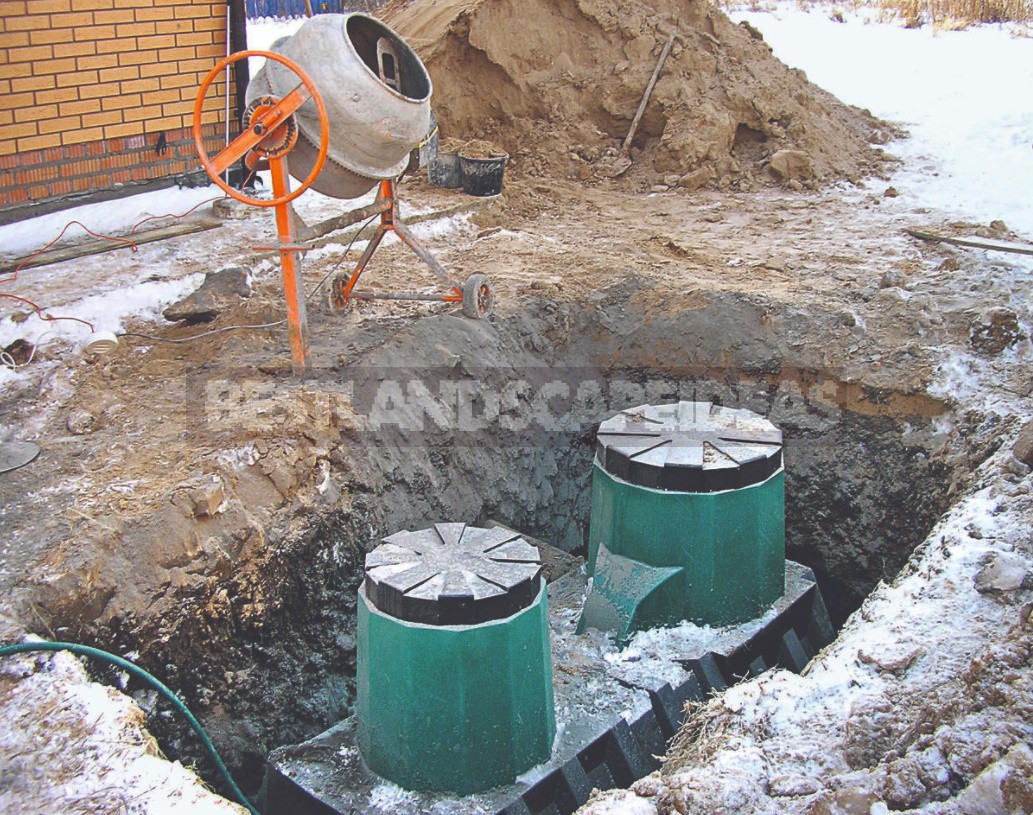
We have been thinking about buying a septic tank for a long time, but so far we have decided – winter has come. The choice was made on a plastic container with a volume of 3 cubic meters, which was calculated based on the number of people living in the house. It remained to get the design and install it in the chosen place.
Preparation
Having ordered the delivery of the tank, we started preparing the pit. An excavator was hired, and soon the pit was ready. Its dimensions were chosen based on the dimensions of the septic tank declared by the manufacturer, adding 30 cm in length and width for the convenience of subsequent work. As expected, water appeared at the very bottom, but since the water table is the lowest in winter, the pit was not flooded much. We poured a 10 cm high sand cushion on the bottom and finished some of the preparatory work.
In the building materials store, we purchased two couplings, two meter knees and two plugs. Blanks with a length of 0.5 m for external sewerage were not found, we had to take a length of 1 m. Sawed off a piece of metal with a hacksaw 20 cm long. Then the outer chamfer was removed with a file, so that the knee would not damage the sealing rubber. They inserted the sawn-off knee into the coupling and closed it with a plug. In the septic tank, there are two pipes — supply and output, so we prepared two knees.

Three days of frost were expected, so no more work was planned, but only sand was ordered. Both the septic tank and the sand were supposed to be delivered at 9 o’clock in the morning, but we went to the site in advance to get the ice frozen at the bottom and the water accumulated under it from the pit. They did the job in an hour, marveling at how thick the ice sheet was. It was necessary to chip it off in pieces 20-25 cm thick, and the water was pumped out by a pump.
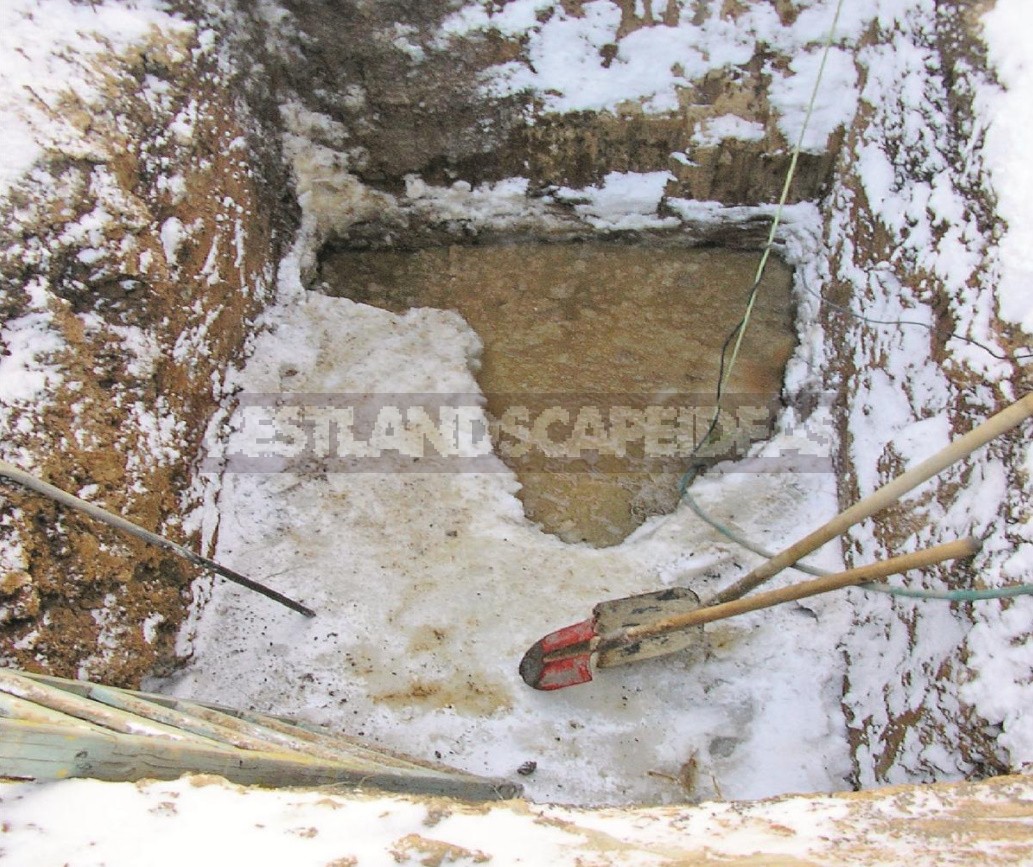
Mounting
As soon as I cleared the pit, they brought a septic tank. With the help of a car cable, the five of them lowered the container to the bottom without any problems. And only at this moment we noticed that the pit is 10-15 cm deeper than necessary. It was already difficult to get the septic tank, so they began to sprinkle it around the edges with sand and spill water.
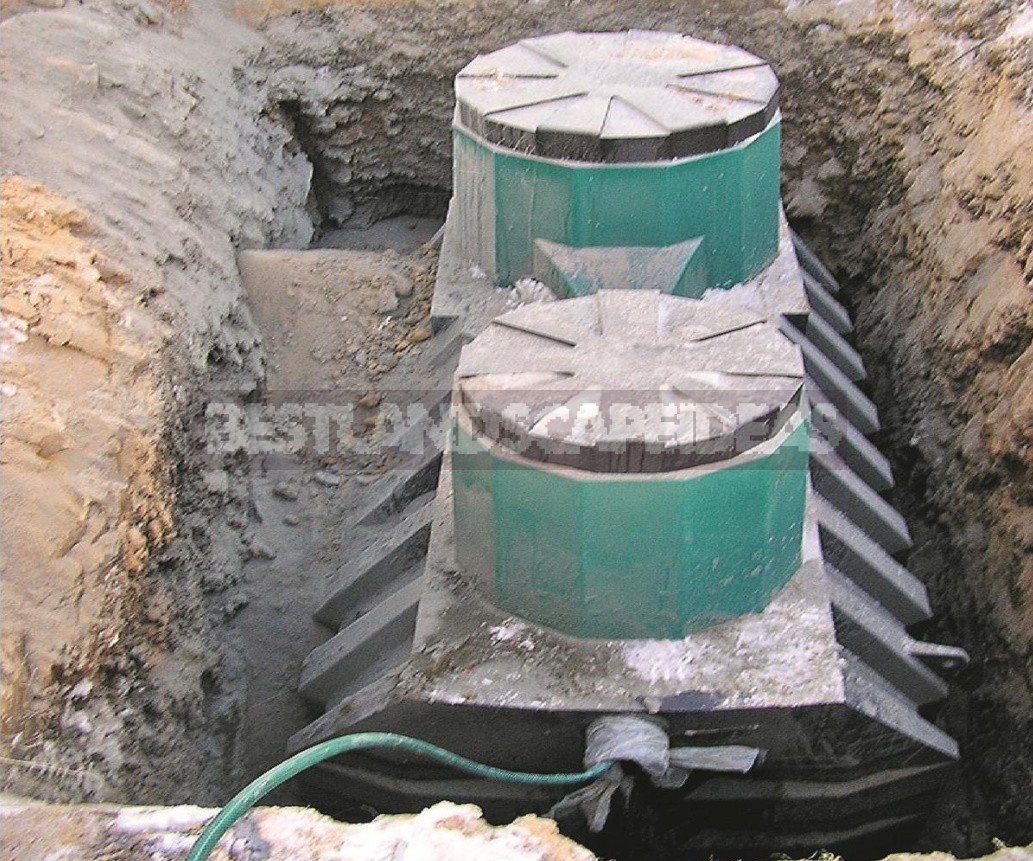
The water did its job: all the sand from the sides of the plastic tank quickly rushed after the rivulets of water. Several times I had to turn the container to give it stability.
Commit
To prevent the septic tank from being squeezed out by ground water in the spring, it must be “anchored”. Usually, a plastic container is tied with cables to a reinforced concrete slab laid at the bottom of the pit. But this option immediately disappeared, because for us it was very labor-intensive.
They did it differently: they filled the tank from the sides with a mixture of cement and sand. This method is sometimes called “passive concreting”. In this case, the cement with sand is mixed in the proportion of 1:5. We set the ratio 1:4 — for a container of 3 cubes, 16 bags of cement were needed. The mixture was prepared with a conventional concrete mixer.Simultaneously with filling the sinuses, the container itself was filled with water. To do this, a hose was inserted into the supply pipe. The septic tank was filled until the water began to flow out of the outlet pipe. By the way, at the same time once again made sure that the septic tank is right. Water was pumped from a well.
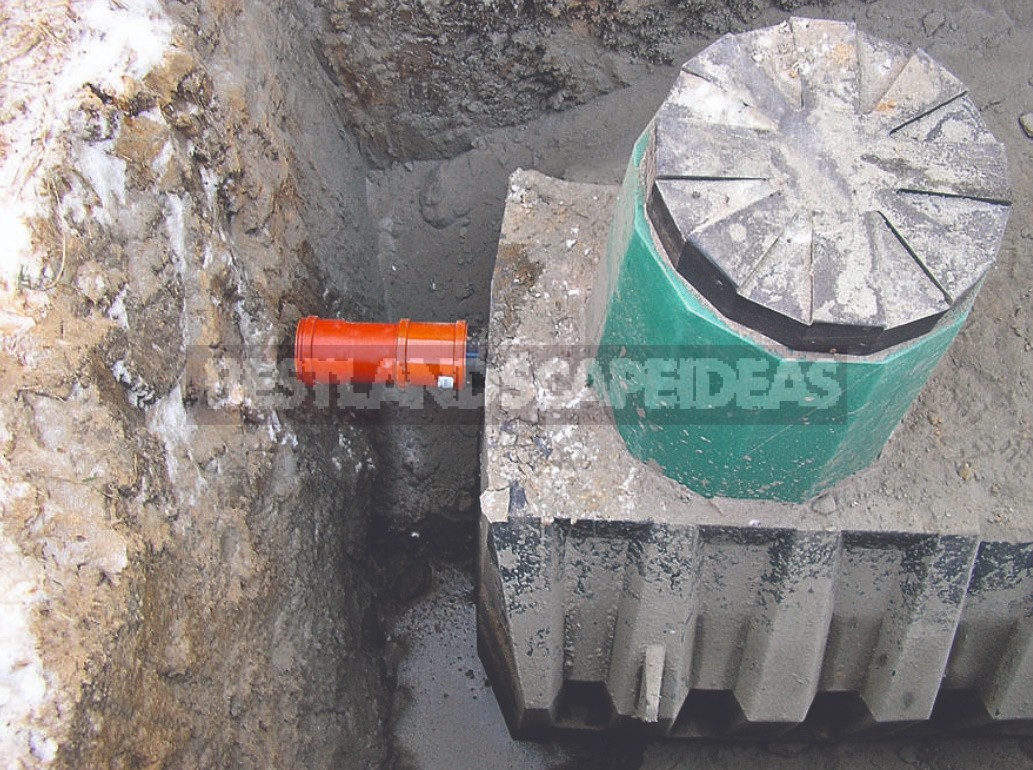
After filling the septic tank with water and filling its lower part, both sewer knees were connected.
Thermal insulation
The sinuses and the septic tank itself were covered with sand cement to a level 15 cm above the surface of the container. To insulate the septic tank, several layers of rolled insulation used for underfloor heating were laid, with the shiny side down. It is better to use it, since when the sand cement subsides, the sheets of extruded polystyrene foam could disperse, forming cracks. To protect against freezing, such cold bridges are undesirable. On top of the insulation, the remaining part of the pit was covered with sand.

After the septic tank is put into operation, it should be pumped out when the ground water level is lowest, and after pumping, it is recommended to fill the tank with water immediately.

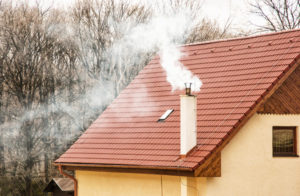


Leave a Reply